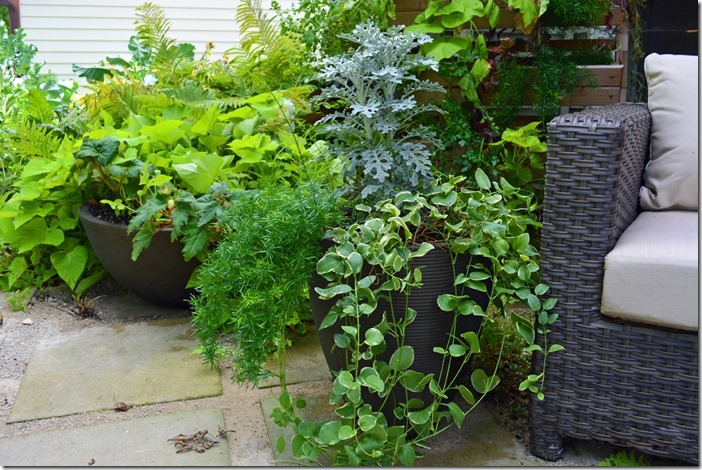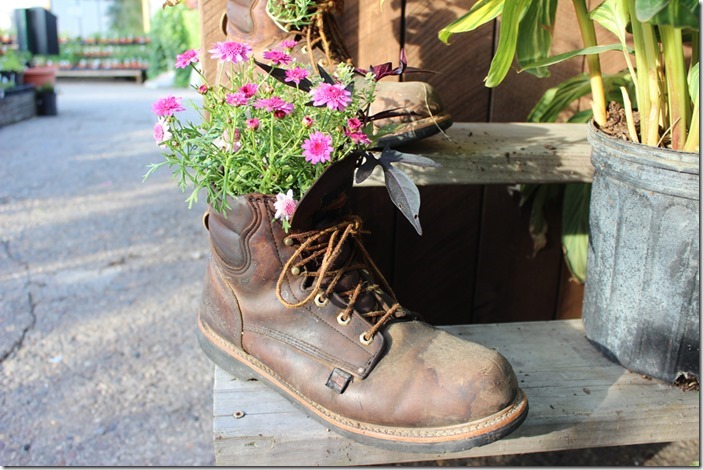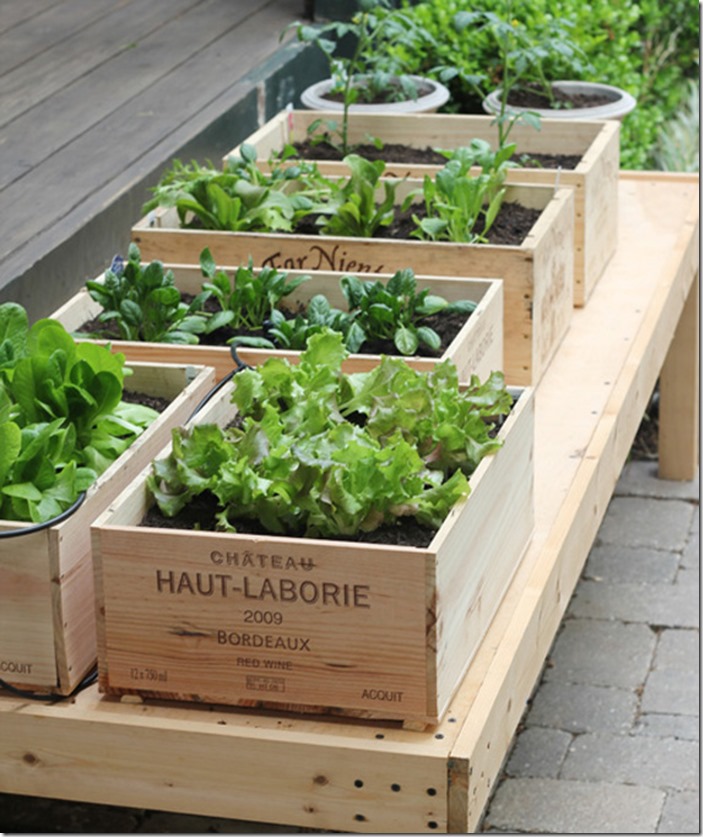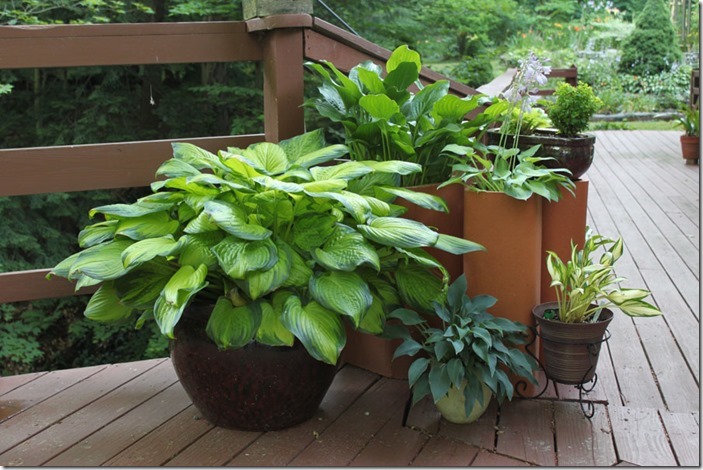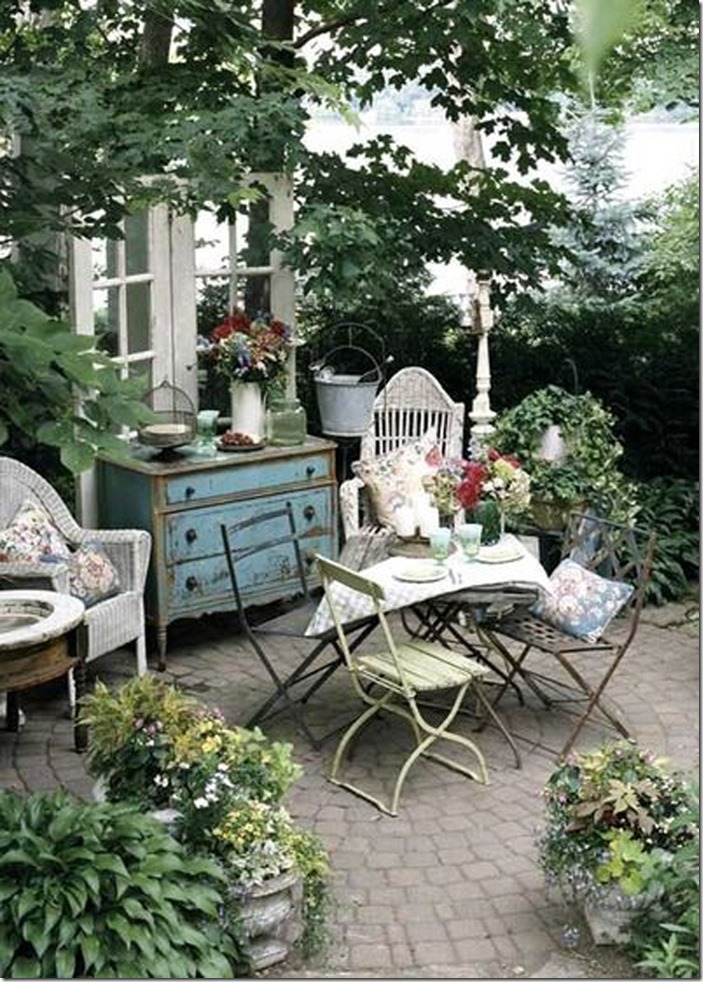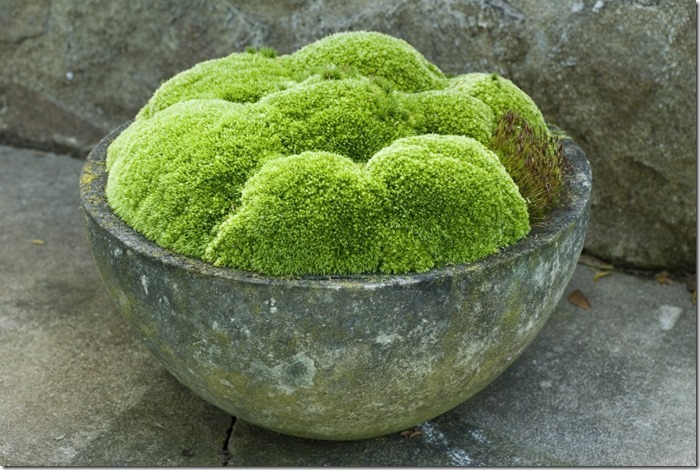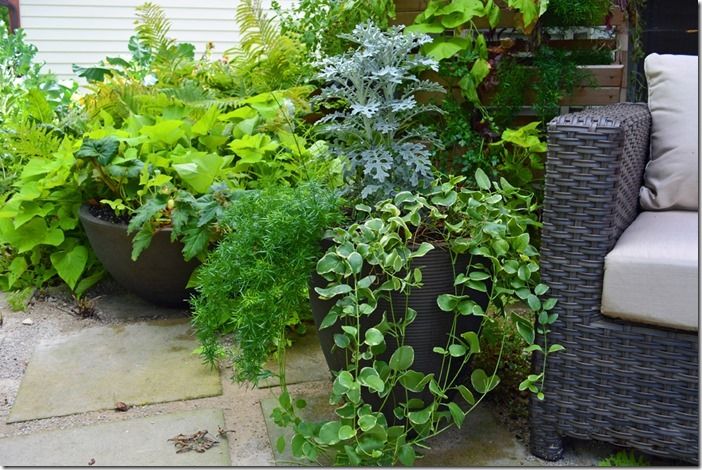
Container Gardening
Designing With Containers – Avoiding Tacky!
Almost anything that holds soil and can have drainage holes inserted maybe used for containing plants. Retail outlets stock a vast range of traditional ceramic, terracotta, glass fibre and stone pots, window boxes and containers, some attractive and some hideous. It’s important that they are frost proof, so check those imported from Mediterranean or far eastern countries as they may not be. Be careful of pots with a narrow neck, as the plant will be almost impossible to remove once its roots have developed. Avoid plastic pots. They are ugly, clash with every colour except, perhaps dark green and quickly become brittle and crack or split.
There are plenty of clichés around, but the discerning designer can have fun thinking beyond the old teapot, Belfast sink or plastic wellies.
Use your imagination and scour junk shops, architectural salvage yards, farmers markets or, for a more contemporary look builders merchants. Some containers may be ephemeral, such as softwood crates for fruit and vegetables. Galvanised metal florists’ buckets, old copper boilers, or a tin bath – all have possibilities.
The trick is not to descend into tackiness or farce. Just one piece, perhaps half hidden, to be chanced upon, is enough to add a little humour and individuality to some, but by no means all gardens. Don’t spend your client’s money on anything remotely whacky until you are sure it will be in tune with their personality and style.
Too many traditionally available containers are small – around thirty centimetres deep or less so have zero impact when they are just set on the ground. You are simply looking down on the top of the plant. There is no point in spending your clients’ money to acquire an expensive, beautifully shaped or glazed pot unless it is taller, or is raised at least half a metre above the ground. Then both the plant and its container can be viewed together.
Positioning and scale are critically important. In small courtyards or terraces or balconies the plants will probably be visible from the building at all times. Don’t group pots of the same size together. Instead position an odd number of similarly coloured containers in different sizes. Be bold. Don’t be afraid to choose one large, beautiful pot. If there are existing containers select them carefully so that they complement each other in shape and colour and unify the arrangement by planting all of them with the same species and colour of plant. Deciduous shrubs or perennials in post may need to be moved when out of season.
Lighting, too often overlooked, transforms planted containers into a pure theatre of dancing shadows and reflections, so if possible choose at least one plant with lacy or feathery leaves that will allow light through and move with the breeze.
Select plants that will suit permanently restricted growth, or are slow growing, unless your clients are experienced gardeners happy to move them to open ground or into larger pots as they mature. Feeding, irrigation, dead heading and on-going maintenance are essential. You can offer your clients a maintenance contract if they are open to this.
